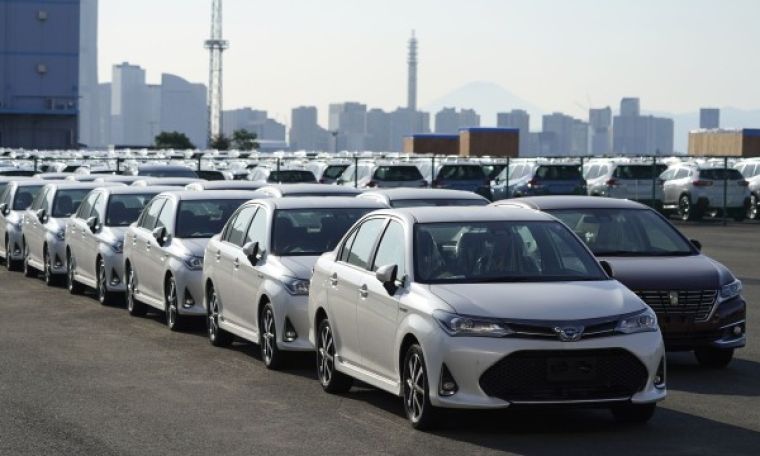How to Calculate the Total Cost of Importing a Motor Vehicle to Sri Lanka ?

The Ministry of Finance has recently lifted the temporary suspension on the importation of motor vehicles under Stage III w.e.f 01.02.2025. As a result, many individuals and businesses are eager to understand how to calculate the total cost of importing a vehicle, including various taxes and levies.
This guide provides a step-by-step breakdown of the cost calculation process, based on the latest gazette notifications issued by the Ministry of Finance.
Understanding HS Codes
Before delving into the cost calculation, it is essential to be familiar with the Harmonized System (HS) Codes assigned by customs authorities. The applicable taxes and duties vary depending on the HS Code of the vehicle.
Step-by-Step Calculation
1. Determine the CIF Value
The CIF (Cost, Insurance, and Freight) value is the base cost of the vehicle, which includes:
-
Cost of the vehicle from the exporting country
-
Insurance charges
-
Freight charges
The CIF value depends on the country of import and the relevant HS Code of the vehicle.
2. Calculate the Custom Import Duty (CID)
The first tax applied to the CIF value is the Custom Import Duty (CID), also known as General Duty.
-
Effective 01.02.2025, this duty is 30% of the CIF value (previously 20%, but increased due to a 50% surcharge).
-
Refer to the relevant gazette notification for detailed information: [Surcharge on Customs Import Duty - 2421/43 (31.01.2025)]
3. Calculate Excise Duty
Excise duty is one of the more complex calculations, as it depends on multiple factors such as:
-
HS Code of the vehicle
-
Fuel consumption
-
Type of vehicle (e.g., hybrid, electric, petrol, diesel, etc.)
-
Engine capacity (CC for conventional vehicles, KW for electric vehicles)
As per Gazette Notification 2418/43, dated 10.01.2025 and Gazette Notification 2421/42 dated on 31.01.2025 , excise duty rates differ based on these factors. You must carefully refer to the relevant gazette to ascertain the correct excise duty applicable to your vehicle.
-
Gazette Notification Link: [Gazette -2418/43 ]
-
Gazette Notification Link: [Gazette -2421/42 ]
4. Luxury Tax Calculation
-
Effective 01.02.2025, the minimum luxury tax threshold has been increased to Rs. 5 million (previously Rs. 3.5 million).
-
The luxury tax is determined based on CIF value, fuel consumption, and vehicle type.
-
Refer to the applicable gazette notification for details. [Gazette -2421/41 ]
5. Compute VAT (Value Added Tax)
As of 01.01.2024, all vehicle imports are subject to VAT.
-
VAT is charged at 18% on the total of:
-
CIF Value
-
Custom Import Duty (CID)
-
-
Ensure you sum up these three components before applying the 18% VAT rate.
6. Special Security Contribution Levy (SSCL) Exemption
As per the Social Security Contribution Levy (Amendment) Act, No. 15 of 2023, the SSCL is NOT applicable for vehicle imports that are subject to excise duty.
Relevant section from the Act:
"Any motor vehicle identified under Harmonized Commodity Description and Coding Numbers for customs purposes and liable to the excise duty under the Excise (Special Provisions) Act, No. 13 of 1989, on the importation."
Final Cost Calculation Formula
To summarize, the total cost of importing a vehicle can be calculated using the following formula:
Total Import Cost = CIF Value + CID + PAL + Excise Duty + Luxury Tax + VAT
Example Cost Breakdown
| Item | Calculation | Amount |
|---|---|---|
| CIF Value | - | XXXX |
| CID (30% of CIF) | CIF × 30% | XXX |
| Excise Duty | (Depends on multiple factors) | XXX |
| Luxury Tax | (If CIF exceeds Rs. 5M, depends on fuel consumption and vehicle type) | XXX |
| VAT (18% on CIF + CID + PAL) | (CIF + CID ) × 18% | XXXX |
| Total Cost | Sum of all above | XXXX |
Note: This is a rough estimate of the cost. Additional charges such as vehicle handling fees, importing agency fees, and their profit margins may also be applicable.
By carefully referring to the relevant gazette notifications and applying the correct tax rates, importers can accurately estimate the total cost of importing their vehicles.
For further details, refer to the Ministry of Finance’s official gazette notifications and customs regulations.
Watch below video to get more idea about above calculation.




